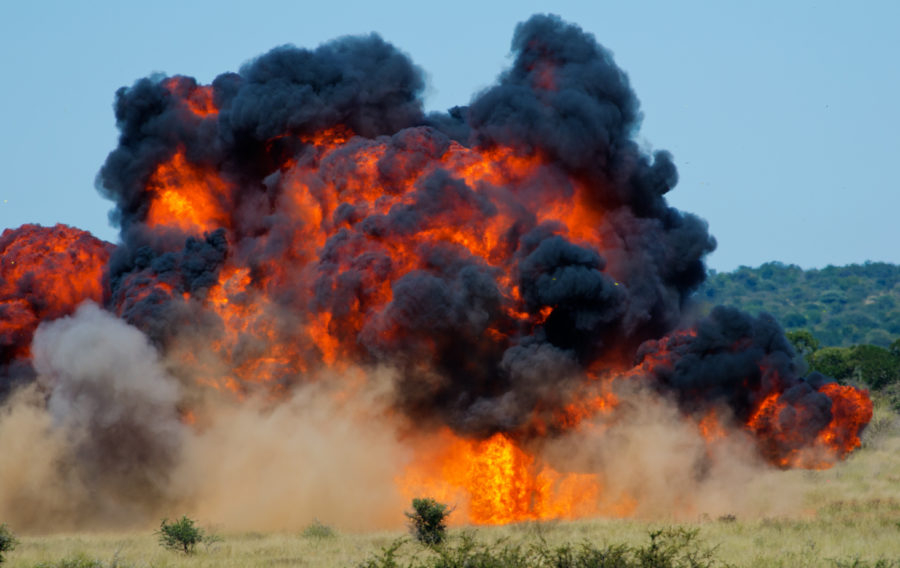
Engineers at the University of Sheffield are getting to the heart of what happens inside an explosion, in a new project aimed at improving the design of bomb protection systems.
The team will be measuring explosions ‘up close’, gathering detailed information from inside the fireball of different types of blast and different environmental conditions, ranging from a land mine to a bomb exploding close to a building.
As global threats from terrorist attacks or from armed conflict increase each year, effective materials, buildings and other structures that can withstand a blast are vital to increase public safety. Despite this, little data has been gathered from actual bomb blasts, so engineers have to rely on computer modelling when designing protection systems.
“Just like earthquakes and hurricanes, real world explosions are unpredictable,” explains lead investigator, Professor Andy Tyas, an expert in blast and impact engineering in the University’s Department of Civil and Structural Engineering.
“Seismic and wind engineers have designed tests to predict how buildings and other structures will respond to these natural disasters, but it’s much harder to do this for explosions.
“Although blast engineers do test structures and materials to assess their protection capability, there’s a lot of debate about the reliability of these tests and a heavy reliance on computer modelling of explosions. That’s because we don’t really know what’s going on inside the blast, so we can’t tell for sure how repeatable the tests are.”
The £1.2 million project, funded by the Engineering and Physical Sciences Research Council (EPSRC) will be carried out at the University’s research facilities, in Buxton. The first step will be to improve and adapt the CoBL (Characterisation of Blast Loading) testing equipment, previously used by Professor Tyas and his team to measure the output from shallow buried landmines. New technologies will enable the apparatus to carry out direct measurements of the blast load, in both space and time, to provide detailed data on the aggressive environment after an explosive is detonated very close to a target.
Professor Tyas said: “Only by understanding the complex physics and fundamental chemical reactions at play inside the explosion fireball, can we allow our engineers a better understanding of blast loading. These insights will help us design better systems to protect people around the world from explosive attacks.”
If you would like to join our community and read more articles like this then please click here.
bomb protection systems EPSRC Professor Andy Tyas University of Sheffield







